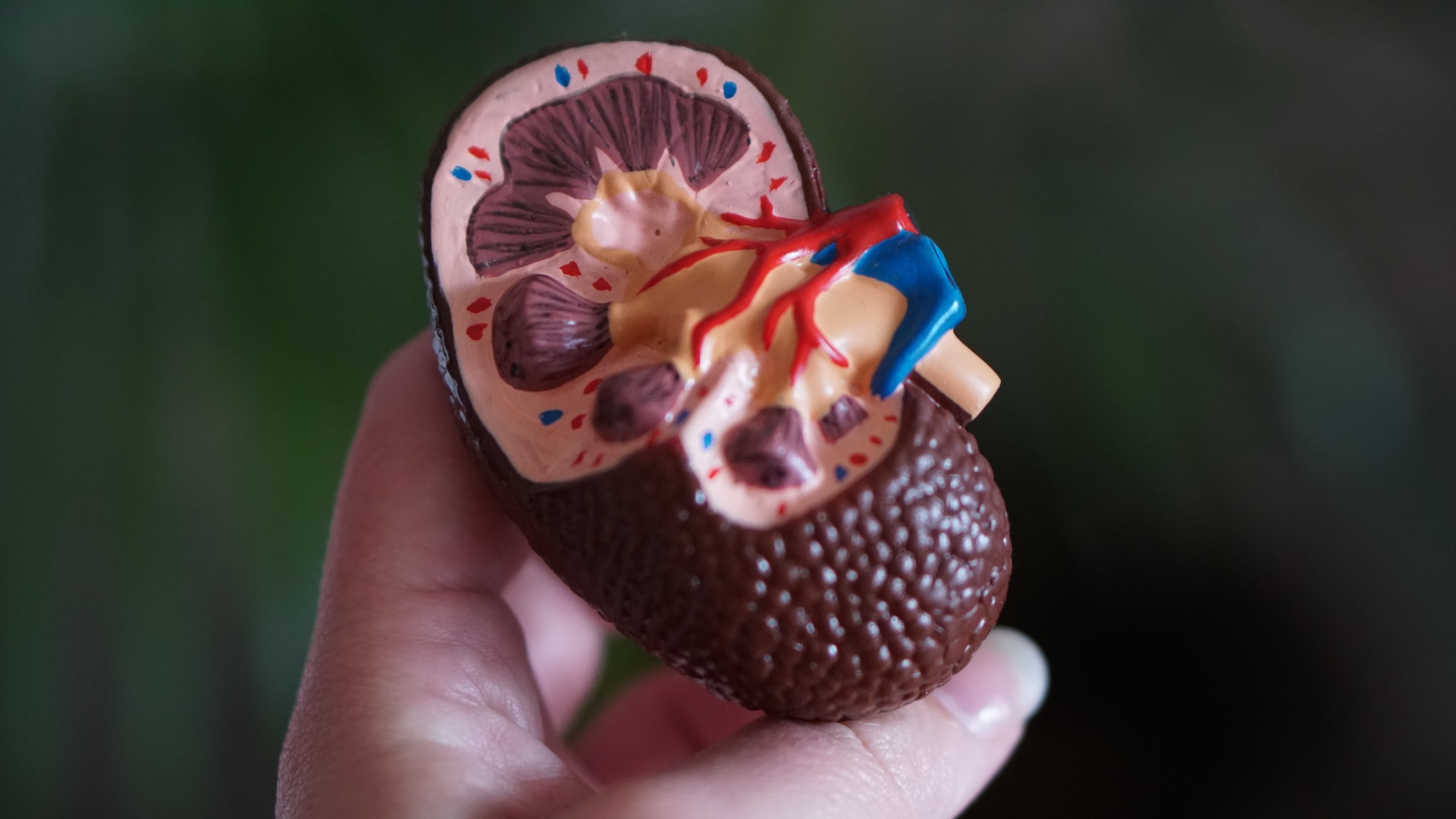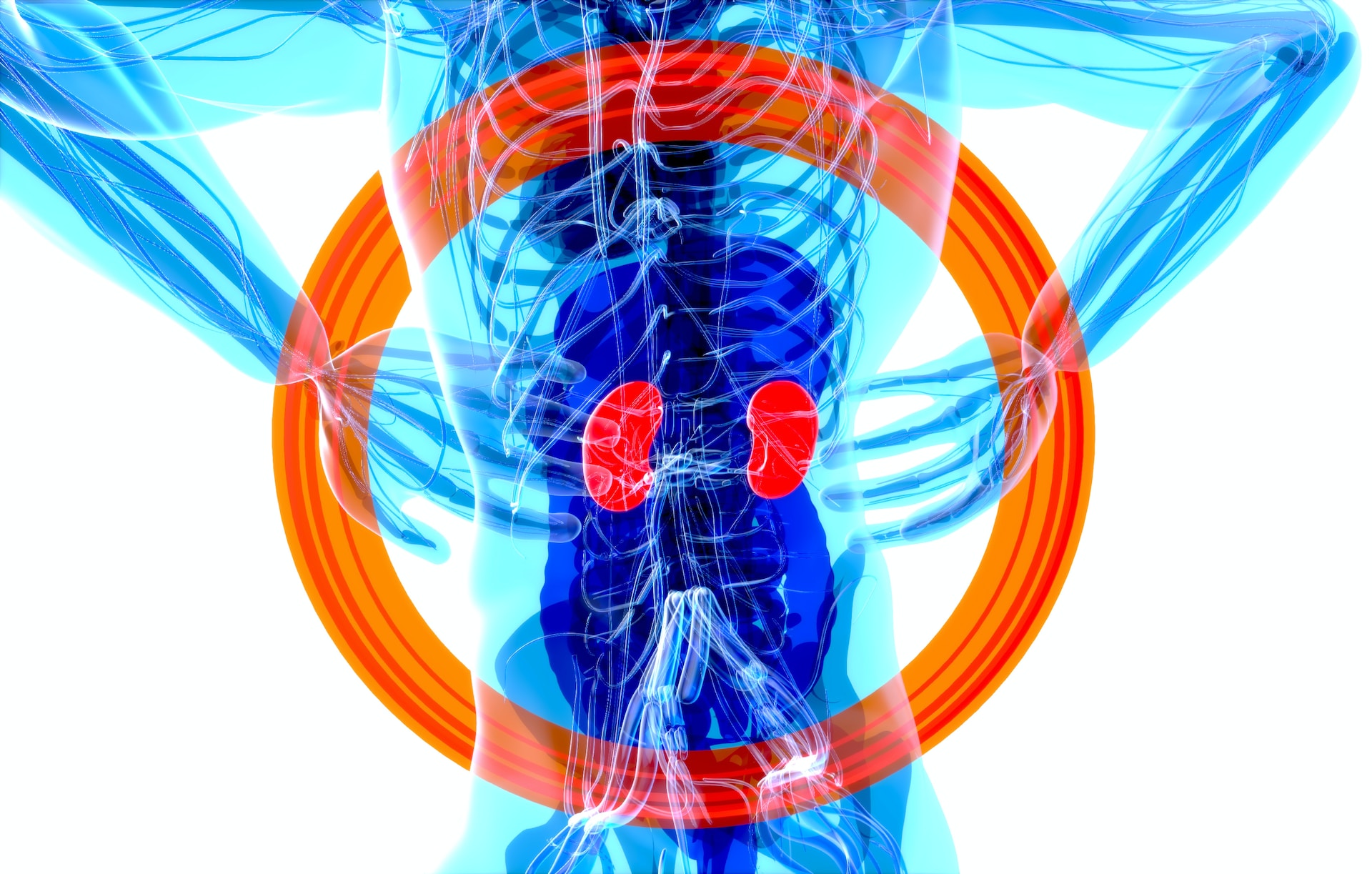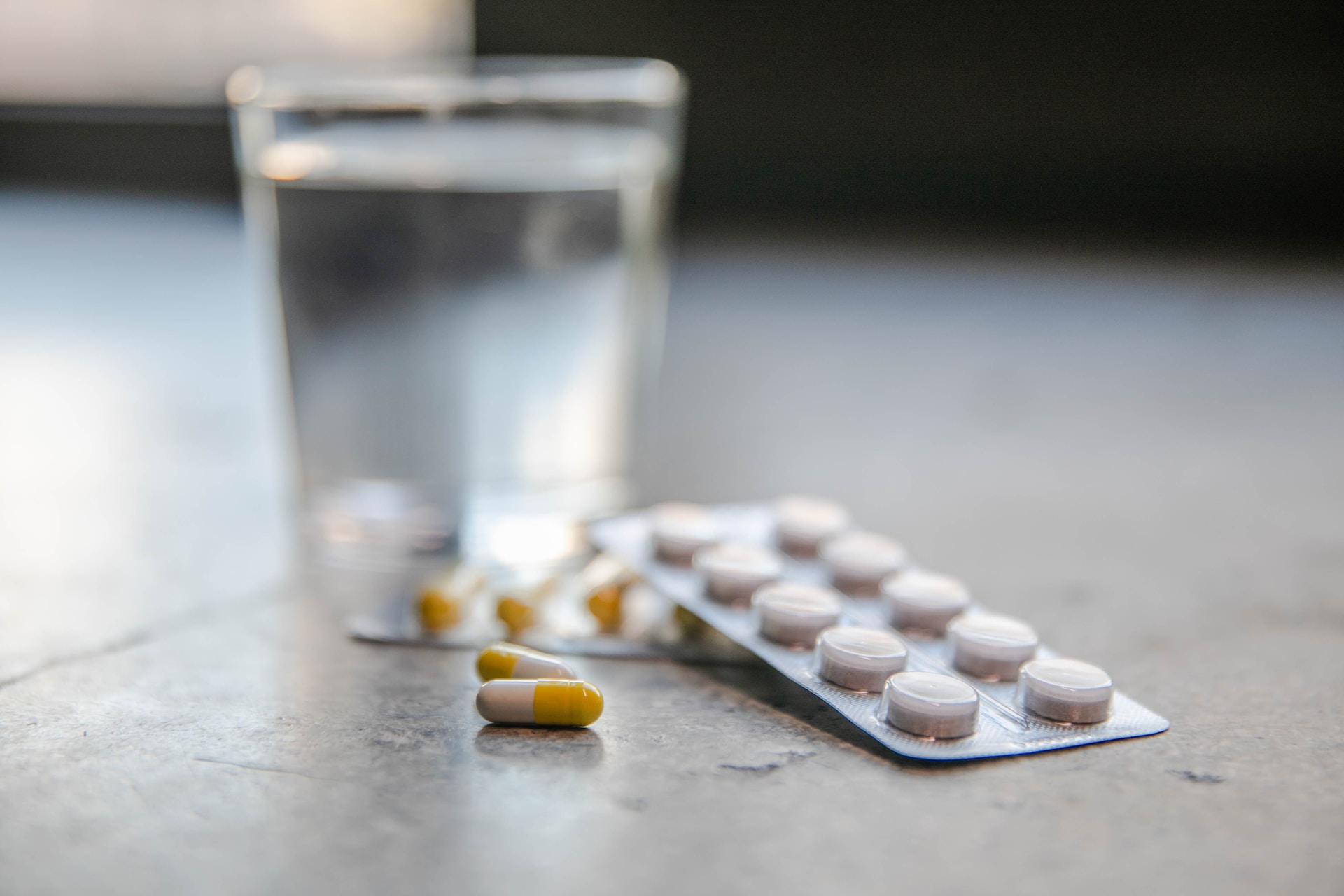Kidney Stones – are deposits of insoluble chemicals that precipitate from the urine—stones lodged in the pathways that drain urine in the kidneys and outside this organ. Kidney stones can form in the kidneys, bladder, or ureter when minerals accumulate.
These stones come in various types based on their chemical composition. The buildup of mineral deposits can lead to kidney dysfunction. The formation of kidney stones starts with small crystals formed from certain compounds present in urine.
These crystals develop when the concentration of a specific compound exceeds the urine's capacity to dissolve it. Over time, deposits can grow larger. Large stones begin to build up, leading to infection. For this reason, they must be removed from the body.
Kidneys – organs of the genitourinary system. In a healthy person's body, two kidneys lie on parallel sides. The kidneys have a good blood supply, so their color is reddish brown. With their shape, they resemble a bean. The kidneys sit in the retroperitoneal space behind the stomach under the liver. The left kidney of a person is established slightly higher than the right. A fibrous and fatty sac and renal fascia surround the kidneys.
The kidneys perform many functions in the human body, which include:
The primary function of the kidneys is to produce urine. Along with urine, toxic substances are removed from the body. Along with urine, ions of various elements are excreted, thus regulating their concentration in the blood.
In addition to cleansing, the kidneys regulate the body's water-electrolyte and acid-base balance. Blood pressure is indirectly regulated through urine production. Excess water in the body is efficiently removed through urine, reducing the volume of blood circulating in the circulatory system and lowering blood pressure.
Additionally, the kidneys have an endocrine function and produce hormones that impact other organ systems in the body. One such hormone is erythropoietin![]() , which affects the hematopoietic cells in the bone marrow responsible for oxygen transport in the blood. In the kidneys, the inactive form of vitamin D3 is also converted to its active condition, which affects the body, primarily the skeletal system.
, which affects the hematopoietic cells in the bone marrow responsible for oxygen transport in the blood. In the kidneys, the inactive form of vitamin D3 is also converted to its active condition, which affects the body, primarily the skeletal system.

When the kidneys begin to lose their function, toxins and metabolic products start building up in the body. This gradual accumulation can lead to impaired organ function and potentially life-threatening conditions. Early diagnosis of kidney diseases is crucial to prevent damage to these vital organs. They include, among others:
There are various types of kidney diseases, including kidney failure, kidney stones, kidney infections, tumors, glomerular diseases, and more. Kidney failure refers to a state where normal renal function cannot be compensated by the body's mechanisms. In cases of nephrolithiasis![]() (kidney stones), impaired renal function can progress to irreversible end-stage renal failure.
(kidney stones), impaired renal function can progress to irreversible end-stage renal failure.
Kidney disease can arise due to multiple factors and may present with symptoms related to the urinary system or through laboratory tests. The treatment approach depends on the underlying cause of kidney disease, with advanced cases sometimes requiring renal replacement therapy or even a kidney transplant.
Kidney stones often contain chemical compounds such as calcium oxalate and calcium phosphate. They are calcium stones. The most common type of kidney stones are calcium stones![]() . These substances are the main cause of kidney stone formation in the majority of cases. Less frequently, deposits made up of other chemical compounds are observed.
. These substances are the main cause of kidney stone formation in the majority of cases. Less frequently, deposits made up of other chemical compounds are observed.
Calcium oxalate – Oxalates, a natural component of urine, are present in small amounts when the body is healthy. They can come from both dietary sources and metabolic changes. However, for oxalate crystals to form in urine and lead to kidney stones, certain factors that promote crystallization are needed. The main factors include an excessive presence of magnesium or calcium and an acidic pH. When oxalates fail to dissolve properly in the urine, they precipitate and form kidney stones.
Calcium phosphate – Amorphous phosphates in urine are a naturally occurring and normal component of urine. They play an important role in maintaining the body's overall balance, known as homeostasis. The average level of phosphorus in the body is controlled by hormones, and this balance can be upset by fluctuations in the level of calcium. The presence of bacteria that cause a urinary tract infection can affect the precipitation of phosphate stones and the formation of kidney stones.
Uric acid – Alongside calcium stones, there are urate stones formed from uric acid as well. Normally, the kidneys excrete most of this substance, with only small amounts passing through the intestines. However, disorders in its excretion can lead to various health conditions linked to an accumulation of excess uric acid in different parts of the body. This can result in the formation of kidney stones that arise from the crystallization of the acid within kidney tissues.
Cystine – Cystine stones are composed of the amino acid cystine. Both cystine and other amino acids are almost wholly reabsorbed from the urine in the proximal tubule. Since the substance is poorly soluble in urine, its high urine concentration leads to cystine stones forming. In most patients, excess excretion of cystine in the urine (cystinuria![]() ) is associated with a genetic defect.
) is associated with a genetic defect.

Kidney stone disease – is a state, condition in which stones form in the kidneys. The disease is more common in men. The incidence of kidney stones can vary depending on the geographic region and dietary habits of a country. Kidney stones have a chronic nature, so it is crucial to conduct a comprehensive diagnosis to identify the causes and prevent future occurrences.
Nephrolithiasis, or kidney stone disease, is marked by intense and acute pain. Detection of kidney stones requires appropriate treatment. Untreated kidney stones can have dangerous consequences and lead to chronic kidney disease. There are various risk factors for kidney stones.
Urinary stones can be formed from compounds found physiologically in the urine and pathological ones. This happens when the concentration of compounds from which kidney stones can form exceeds the body's solubility threshold. This can be caused by the following factors:
Genetic predisposition – Genetic predisposition plays a vital role in the prevalence of kidney stones. The risk of stones symptoms is increased in people whose relatives have suffered from the disease. If you have a family history of kidney stone disease, you are at risk for the disease.
Urinary tract malformations – Some people are born with congenital disabilities in their kidneys and urinary tract, which can lead to anatomical abnormalities. These abnormalities affect the organs' structure and result in issues with producing and excreting urine. Examples of such defects include having just one kidney or having a kidney that has an irregular shape. Some congenital anatomical defects also increase the risk of developing kidney stones.
Urinary tract infections – In certain situations, bacteria enter and multiply within the urinary tract. Inflammation develops, and discomforts associated with the disease appear. A lower urinary tract infection mostly develops involving the bladder. People who suffer from frequent and recurrent urinary tract infections are at risk of developing lithiasis.
Taking certain medications – Certain medications can contribute to the formation of kidney deposits. This includes specific laxatives and glucocorticosteroids![]() , among others. Individuals who take these medications over an extended period are at higher risk for developing kidney deposits.
, among others. Individuals who take these medications over an extended period are at higher risk for developing kidney deposits.
Diseases – Certain medical conditions can elevate the likelihood of kidney stone formation. Examples include osteoporosis, gout, and hormonal disorders like hyperparathyroidism. Patients with Crohn's disease or malabsorption syndrome may also be prone to developing these stones.
Excessive urine thickening – Insufficient hydration can lead to excessive thickening of urine, which in turn increases the risk of developing kidney stones. Chronic dehydration also contributes to a higher concentration of toxins in the body.Then, the kidneys don't have enough raw material to produce enough urine, and the nephrons may be unable to keep up with cleansing them.
Improper intake of vitamins and minerals – Sometimes oxalates can bind with minerals and form crystals, leading to kidney stones. Excessive consumption of vitamin C![]() can cause this. Also, nutrient deficiencies can contribute to the development of kidney stones, including magnesium or calcium deficiency.
can cause this. Also, nutrient deficiencies can contribute to the development of kidney stones, including magnesium or calcium deficiency.
Dietary factors – An inadequate diet, particularly one that lacks sufficient fluids and includes excessive animal protein, can increase the risk of kidney stones. Consuming high amounts of protein leads to increased calcium excretion by the kidneys, potentially leading to more stone formation in the kidneys.
Kidney stones usually do not produce any symptoms for many years. Kidney stones can grow for years, and the first symptoms of the disease appear only when the deposits reach a significant size. Symptoms of kidney stones include:
Patients usually find out they have a kidney stone problem when they suffer a kidney colic attack![]() . Kidney colic occurs when a stone blocks the urinary tract, causing swelling in the kidneys. This leads to an intense and severe pain known as renal colic. The acute pain is typically localized on one side of the lower back, but it can radiate to other areas such as the groin and lower abdomen.
. Kidney colic occurs when a stone blocks the urinary tract, causing swelling in the kidneys. This leads to an intense and severe pain known as renal colic. The acute pain is typically localized on one side of the lower back, but it can radiate to other areas such as the groin and lower abdomen.
Nausea, vomiting, fever with chills, and blood in the urine may also accompany the attack and persist for a short while afterwards. Kidney colic attacks usually last between 20 minutes to one hour. This condition requires immediate medical intervention, as there are severe possible health complications associated with it, such as urinary tract infections, among others.
Appropriate tests are needed to detect the presence of stones in the kidneys. When diagnosing kidney stones, a specialist may order several tests:
The primary tests for kidney stones are imaging studies like CT scans. These tests allow doctors to visualize even small deposits in the kidneys and assess their size and location.
Additional tests such as urine examinations and diagnostic tests from blood samples can also be helpful in determining the concentrations of certain chemical compounds that may contribute to kidney stone formation, such as sodium, calcium, citrate, and oxalate.
Blood can be detected in the public urine examination. The exact possible abnormalities in the test results depend on whether the test was performed during a kidney colic attack or between attacks. In the case of accompanying nephrolithiasis, urinary tract inflammation, an increased concentration of leukocytes, and bacteria may also be detected in the urine.
Analyzing the chemical composition of kidney stones that have been expelled or surgically removed is also possible. The information obtained from this test makes it possible to accurately determine the cause of stone development in the kidneys and implement effective treatment.
There are various methods of treating kidney stones, which depend on the patient's condition and disease development. These include:
In most cases of kidney stones, drug treatment is used. In the case of an attack of renal colic, it is recommended to administer diastolic drugs and painkillers![]() . These drugs have a diuretic and mildly relaxing effect on the urinary tract, facilitating the expulsion of small deposits of kidney stones.
. These drugs have a diuretic and mildly relaxing effect on the urinary tract, facilitating the expulsion of small deposits of kidney stones.
Usually, a renal colic attack is caused by a small stone's movement through the ureter. Then, it is generally sufficient to take medication and drink plenty of water and fluids to expel the gravel faster.
On the other hand, when removing the urinary stone on its own is impossible, the patient's doctor may decide that interventional treatment is necessary. There are several treatments available for kidney stones.

Surgery is typically reserved for larger kidney stones, although doctors are increasingly turning to non-invasive techniques. One common method is extracorporeal lithotripsy,![]() which utilizes shockwaves to break up the stones into smaller fragments that can be passed through urine. This procedure is safe and carries minimal risk of complications.
which utilizes shockwaves to break up the stones into smaller fragments that can be passed through urine. This procedure is safe and carries minimal risk of complications.
In more severe cases, anesthesia may be used for procedures like percutaneous nephrolithotripsy![]() . It involves inserting a nephoscope into the renal pelvis through a small incision in the skin near the kidney, through which the doctor can view the stone, determine its location, and, using appropriate tools, crush it and then remove it.
. It involves inserting a nephoscope into the renal pelvis through a small incision in the skin near the kidney, through which the doctor can view the stone, determine its location, and, using appropriate tools, crush it and then remove it.
Ureterorenoscopy![]() is another procedure where a doctor uses a flexible scope to examine the bladder and ureter. The stone is visualized through the scope, and it can either be removed completely using specialized instruments or crushed into smaller pieces before extraction.
is another procedure where a doctor uses a flexible scope to examine the bladder and ureter. The stone is visualized through the scope, and it can either be removed completely using specialized instruments or crushed into smaller pieces before extraction.
To prevent kidney stones from recurring, a key priority is maintaining a proper diet and ensuring adequate fluid intake. The goal is to increase urine output and reduce the concentration of substances that can form stones. A balanced diet plays a crucial role in avoiding imbalances in urine composition that promote crystallization.
It's recommended to limit the consumption of animal protein and reduce sodium intake to further support stone prevention. The diet also depends on the chemical composition of the stones. Lifestyle changes by increasing physical activity, normalizing body weight, reducing stress and alcohol consumption support preventive measures. Also, using herbal medicines to support the urinary tract may be helpful.
People in the risk group for kidney stones should exercise caution. Among those at risk of developing kidney stones are patients with Crohn's disease and diseases related to the urinary tract, but also people who are obese and have unhealthy lifestyles. To avoid kidney stones, it is recommended to follow the following rules.
People who are not careful about hydration may be at risk of developing kidney stones. Drinking insufficient fluids causes urine to thicken. Dehydration![]() can be indicated by chronic fatigue and headaches. Also, infrequent urination and dark yellow urine are characteristic signs of dehydration. Often, inadequate water supply also affects skin conditions, dry mouth, and tongue.
can be indicated by chronic fatigue and headaches. Also, infrequent urination and dark yellow urine are characteristic signs of dehydration. Often, inadequate water supply also affects skin conditions, dry mouth, and tongue.
Therefore, to keep your body adequately hydrated, drink at least 2 liters of water daily. Children and seniors are most vulnerable to dehydration. Certain medications and diseases can also contribute to dehydration.
To ensure your body is well hydrated, include foods in your diet containing plenty of water. Among vegetables, cucumbers and celery have the most water. With kidney stones, it is also recommended that half of the fluids you drink should be filtered or low-mineralized water.
Preventing kidney stones cannot be achieved through a one-size-fits-all diet plan. Dietary recommendations are tailored to the specific type of stones and vary for each individual. However, it is worth noting that a diet high in animal protein![]() increases the risk of urinary tract stones. Excessive consumption of animal protein leads to hypercalciuria, an elevated concentration of calcium ions in the urine. Therefore, it is advised to consume a moderate amount of protein and avoid ketogenic diets.
increases the risk of urinary tract stones. Excessive consumption of animal protein leads to hypercalciuria, an elevated concentration of calcium ions in the urine. Therefore, it is advised to consume a moderate amount of protein and avoid ketogenic diets.
Additionally, excessive sodium![]() intake should be avoided as it poses a danger as well. Products with high salt content should be excluded from your diet. Alongside these general guidelines for preventing kidney stones, maintaining an appropriate intake of calcium is recommended. A low-calcium diet may actually increase the likelihood of developing kidney stones.
intake should be avoided as it poses a danger as well. Products with high salt content should be excluded from your diet. Alongside these general guidelines for preventing kidney stones, maintaining an appropriate intake of calcium is recommended. A low-calcium diet may actually increase the likelihood of developing kidney stones.
Excessive body weight promotes frequent urinary tract infections, increasing the risk of urolithiasis. Individuals who are obese, have insulin resistance and high insulin levels, and experience hypertension are at a significantly higher risk of developing urolithiasis (formation of urinary stones).
Regular physical activity, performed for an adequate duration and intensity, not only safeguards the urinary system against stone formation but also offers important cardiovascular protection. It is crucial to stay adequately hydrated during sports activities, hot weather conditions, or when the body experiences a fever. Failure to replenish lost fluids through sweat can have counterproductive effects.

The kidneys have a vital role in producing urine and eliminating harmful substances from the body. However, when the kidneys fail to function correctly, more toxins and metabolic products accumulate.
Kidney stones are insoluble chemical deposits that precipitate from urine and block the pathways through which urine flows in both kidneys and outside of them. The stones can develop in one or both kidneys and in the bladder or ureter where mineral deposits occur. Different types of kidney stones exist based on their chemical composition.
Kidney stones often remain asymptomatic for many years, gradually growing in size unnoticed. Symptoms typically arise when there is a significant increase in deposits, resulting in a kidney colic attack. This occurs when a stone blocks the urinary tract, causing swelling and severe pain in the kidneys or kidney.
Imaging studies such as ultrasound (USG) and CT scans are commonly used to diagnose kidney stones. These tests can detect even small deposits in the kidneys and determine their size and location. Additional tests may include a general urine examination and blood diagnostic tests.
In most cases, drug treatment is prescribed for kidney stones. During an episode of renal colic, diastolic drugs, and painkillers are recommended to alleviate {symptoms. If the stone cannot be passed naturally, interventional treatment may be necessary as determined by a healthcare professional.
There are various available remedies for kidney stones. People at risk of developing kidney stones should exercise caution. Those with Crohn's disease or urinary tract-related conditions, as well as individuals who are obese or have unhealthy lifestyles, are more susceptible to developing kidney stones. Therefore, taking preventive measures is crucial to minimize the formation of kidney stones.